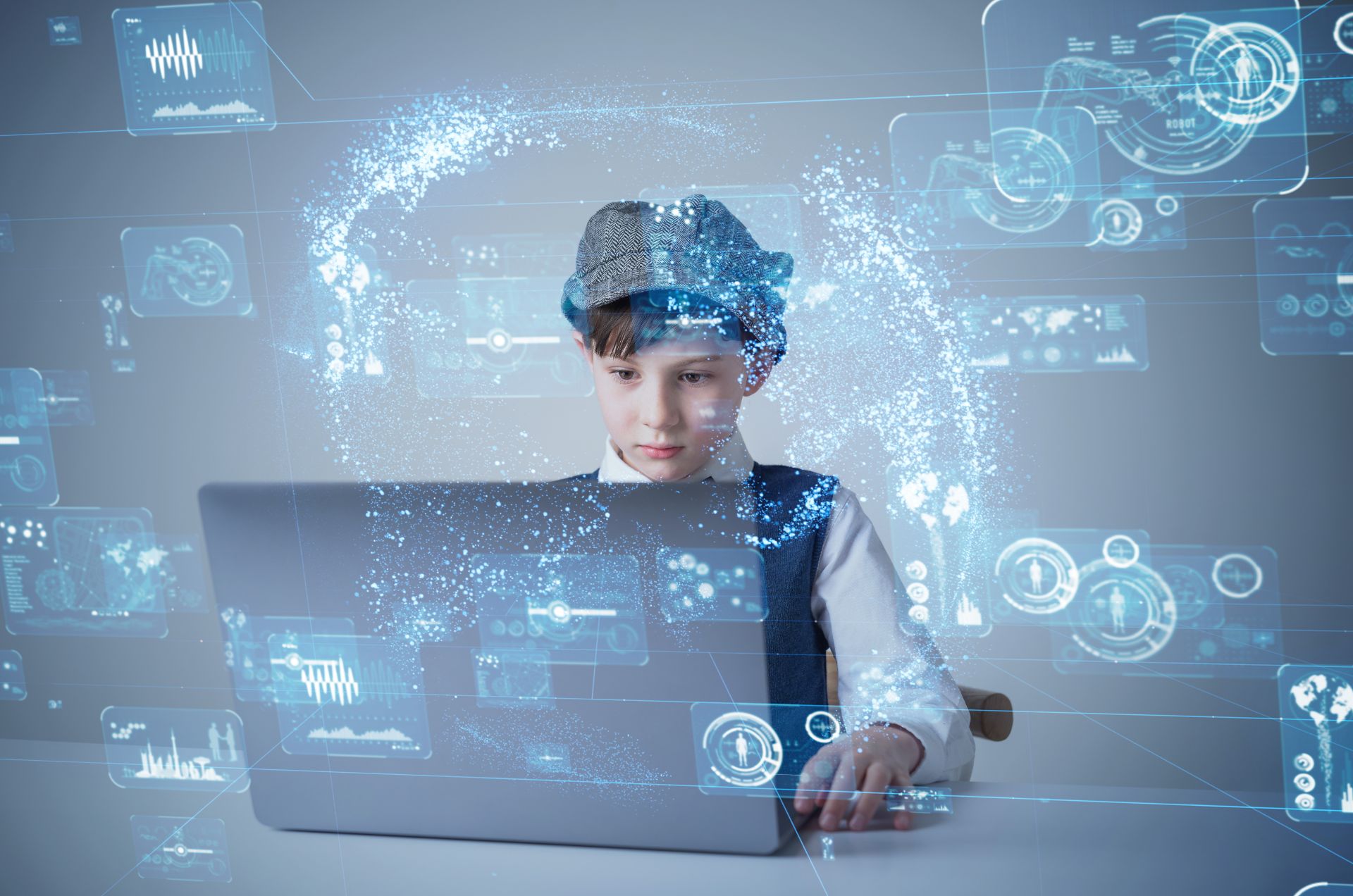Technology has dominated every part of the social order and is now the lifeblood of modern civilization for a long time. It will continue to evolve to meet the changing needs of society. The iGen — those born between 1995 and now – can’t envisage a world without technology. With technological breakthroughs throughout industries, the education sector is most impacted. In truth, technology has always been at the forefront of education, from etching symbols and figures on cave walls through Gurukul education, where students were taught how to use the technology available at the time, to artificial intelligence (AI) and virtual reality (VR).
The use of technology in India’s educational sector has steadily increased to assist in instruction. Hybrid Learning has given birth to an entirely new manner of learning, processing, and absorbing information by combining both “Traditional” schooling with the adoption of modern advancements.
The school system has seen a transformation in the last year, with technology playing a pivotal role in making learning more accessible, engaging, and participatory. Several e-learning platforms have emerged that combine interactive tools, immersive creatives, and animations to encourage young brains to be more creative.
The new normal is e-learning
As technology becomes more and more integrated into our daily lives—whether through apps, IoT, or even the fundamental offline tools on which we’ve become so reliant—it’s more important than ever that we know how to use it appropriately.
The COVID-19 problem has underlined the importance of technology in the education sector and has made e-learning a requirement. The use of e-learning as a substitute for traditional learning has grown in popularity in the last year due to the demand for safe, online ways of training. Through interesting material, global resources, and the ability to enroll in validated certification courses online, technology has enabled various learning opportunities.
While the elementary and secondary school systems did not recognize the necessity to incorporate frequent use of technology into the curriculum before the pandemic, the pandemic era has witnessed a paradigm shift in learning style.
While we can’t dispute the benefits of “traditional” learning, the inclusion of technology in traditional classrooms has only benefited students with a more comprehensive and dynamic learning experience.
What impact does technology have on students?
Not long ago, education meant reading books and listening to teachers, which were tedious for many students and teachers. Some educational institutions attempted to implement activity-based education, which did inspire students and boosted their interest to a degree, but the results were not as planned.
Learning has become more collaborative and engaging due to the use of current technologies such as Augmented Reality, Virtual Reality, and Artificial Intelligence in education. According to Schindler et al., 2017, technological application in education encourages students to participate in higher-order thinking, build communication and discussion skills, and reflect on the content’s essence. It also improves digital proficiency. Another study found that using technology in the classroom increases students’ motivation to learn and complete activities.
Without a doubt, technology-enhanced students’ enthusiasm for learning by a factor of ten, and modern technology-assisted students in improving their critical thinking and analytical skills, which are crucial in facing any difficulty. It has aided pupils in not only becoming successful but also excelling. This is true not only for schools but also for post-secondary and professional education.
Teaching in a traditional classroom vs teaching in a virtual classroom
Marc Prensky [Educational Author 2001] discovered that the average student spends fewer than 5,000 hours reading in his lifetime but more than 10,000 hours playing digital and online games. He also noted that today’s students are not the ones that our old educational system was created to educate.
Students from other schools and other academics, including Pucel and Stertz [2005], Crowe [2004], and Lu and Gordon [2009], have highlighted the need for technical education above traditional education. The National School Boards Association [2007] identified technological proficiency as a critical 21st-century learning tool. John Dewey sums up the relevance of technology in education: “If we teach today’s kids as we taught yesterday’s students, we rob them of the future” (Agnello, White, & Fryer, 2006).
Implementing technology in schools and colleges presents several challenges
Jung emphasized the difficulties that traditional classroom teachers confront as a result of the quick change and usage of technological methods in the classroom and the development of the available knowledge base. According to Gressard and Loyd (1985), the attitude of instructors toward technology and technical gadgets is the most critical component in integrating IT into the educational system. They also mentioned that not all teachers are enthusiastic about technology tools.
Another issue to consider is that they must be trained to upgrade themselves to keep up with new technology. Most GenX teachers believe that learning advanced technology is complex and that blackboards are considerably more straightforward. They believe that emotional bonding occurs in the classroom and aids in developing excellent human beings. Teachers of millennials are busy and don’t have time to enhance their skills, even though they aren’t new to technology. Other roadblocks include a lack of finances, restricted or no access, a lack of competence, insufficient assistance, and a lack of time.
Butler and Sellbom (2002) and Chizmar and Williams (2001) emphasize the importance of reliability, hardware compatibility, and internet concerns. Technology advances exponentially, which means that a gadget purchased today may become obsolete in three months. Money, time, and experience are required to upgrade those.
Many people worry that using technology in school will cause pupils to become more tied to computers and less socially capable. We notice that the iGen generation’s youngsters spend more time with cell phones and other electronic devices. Even a baby as young as a year old calms down and gets more interested in the cell phone display. Studies are being conducted to see how it will affect the brain, but for the time being, artificially intelligent computers are playing a significant role.
The good news is that children quickly adapt to technology. These days, software development is the most popular subject among children. Even before kids reach the age of adolescence, they can learn, analyze, and design software programs. This demonstrates that the brain is gradually changing from its current state to a higher level of machine language comprehension.
There are also many online social groups for students in every field where they can communicate with others who share their viewpoints. It is not entirely accurate to suggest that society is becoming less socially capable since group discussions and knowledge-sharing blogs are rising. It’s only that the mode of communication has shifted to a new platform.
At last
A beneficial learning experience It is possible for technical media to be freely available. It should be simple enough for even the most inexperienced computer user to operate. It should be very engaging, and entertaining, and work on low bandwidth and load quickly, as well as improve itself from time to time.
On Socialbuzzness, features articles on and about technology, business, lifestyle, and health. Socialbuzzness covers all kinds of news, including entertainment, technology, business, and finance.











